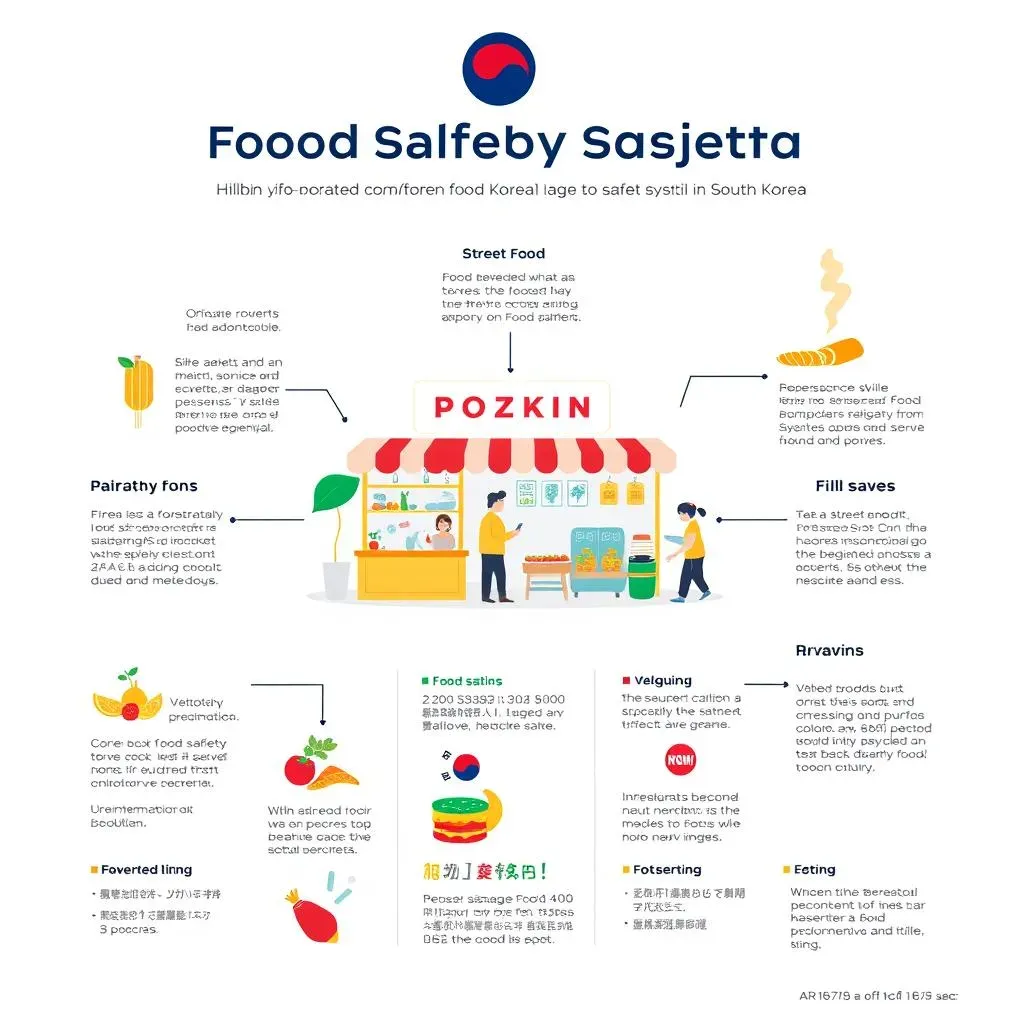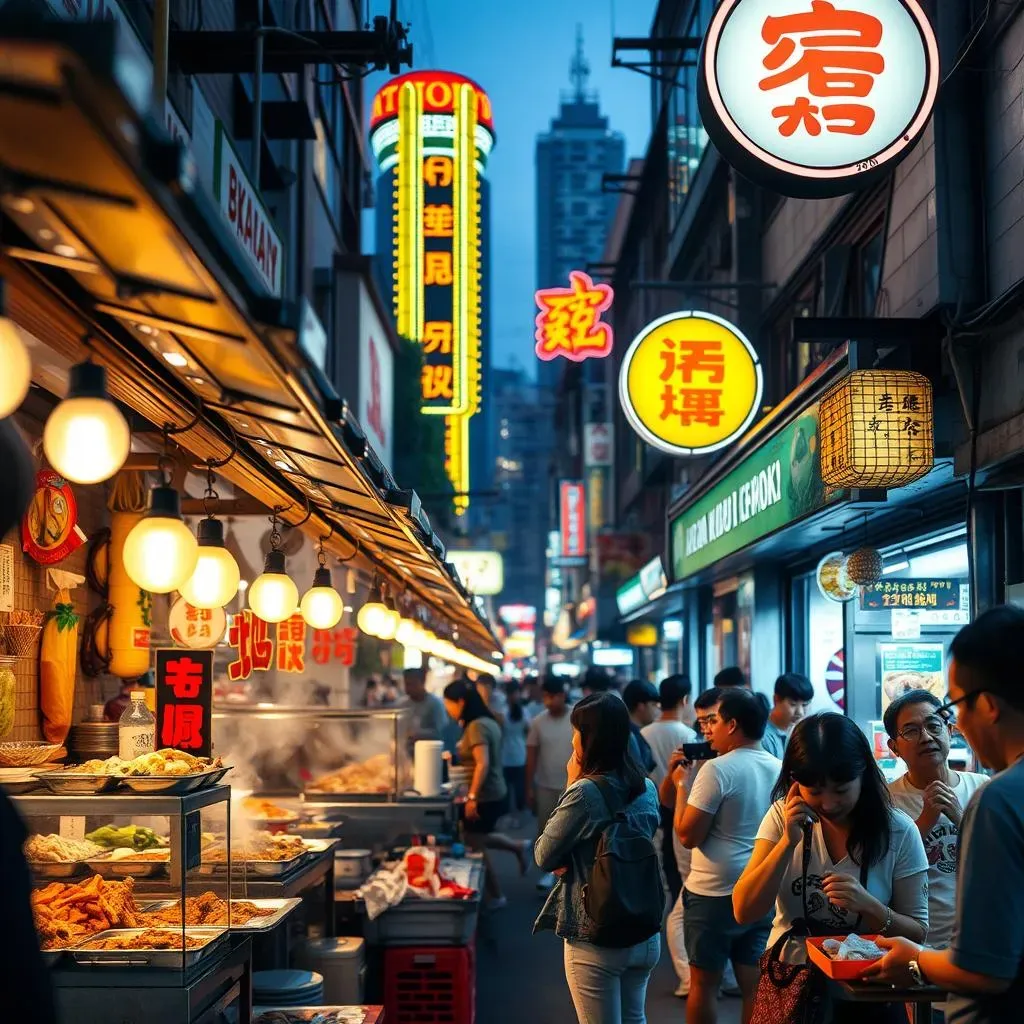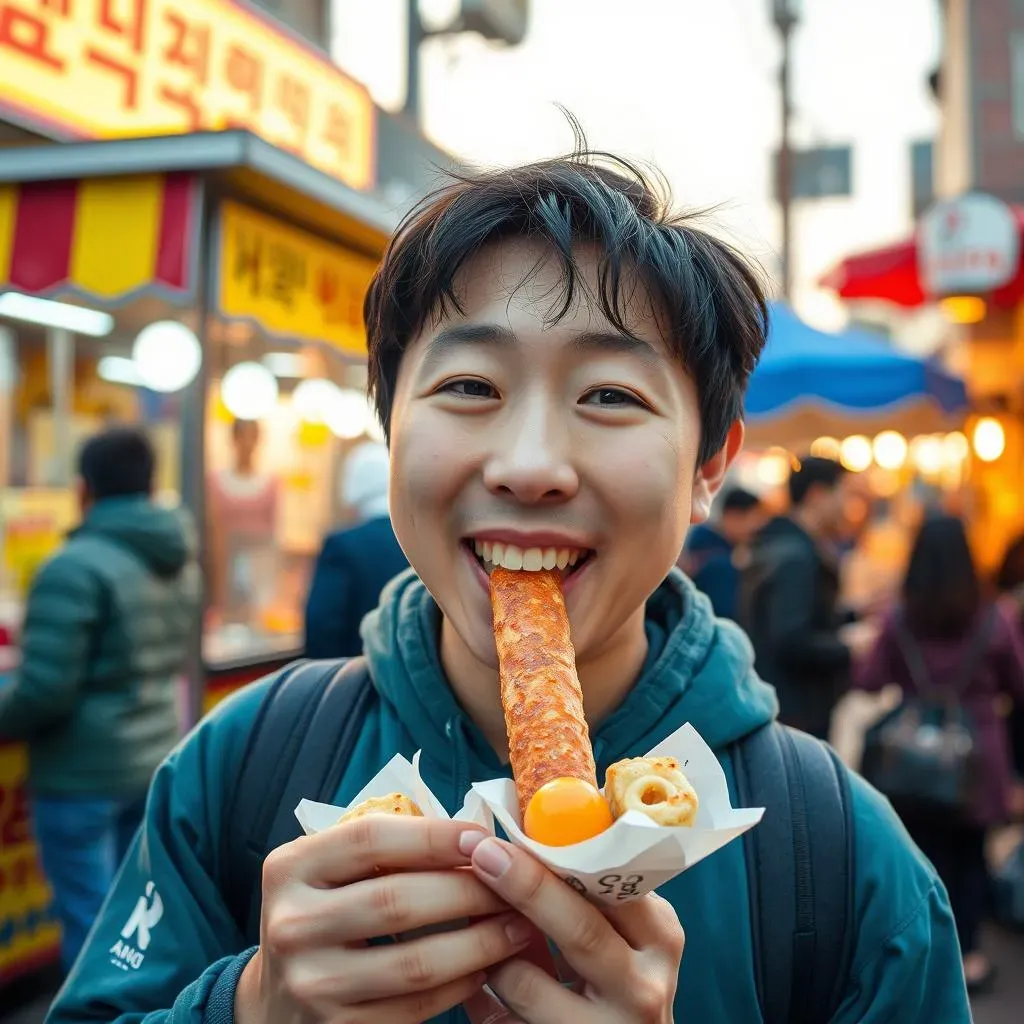Table of Contents
Have you ever wondered, "Is Korean street food safe?" The vibrant street food scene in South Korea is a tempting spectacle of sizzling meats, sweet treats, and savory snacks. But with so many delicious options, it's natural to have concerns about food safety, especially when traveling abroad. This article will address those concerns head-on. We'll explore South Korea's robust food safety regulations, delve into common worries surrounding street food hygiene, and provide practical tips to help you navigate the culinary landscape with confidence. Whether you're a seasoned traveler or a first-timer planning your Korean adventure, understanding the answers to "is Korean street food safe?" is key to enjoying a delicious and worry-free trip. Prepare to embark on a flavorful journey where we uncover the truth behind the safety of Korean street food, equipping you with the knowledge to savor every bite without hesitation. Get ready to satisfy your curiosity and discover the secrets to a safe and delicious street food experience in South Korea!
South Korea's Food Safety Standards: A Look at Regulations
South Korea's Food Safety Standards: A Look at Regulations
South Korea takes food safety seriously! They have a multi-layered system overseen by the Ministry of Food and Drug Safety (MFDS). This isn't just some suggestion; it's a robust system with regular inspections, strict licensing, and clear guidelines for food handling. Think of it like a superhero team dedicated to keeping your Korean street food delicious *and* safe. They monitor everything from the source of ingredients to the preparation and sale of food, especially focusing on street vendors. The MFDS sets hygiene standards for street food stalls, including requirements for food storage, cooking temperatures, and handwashing. Many street vendors even proudly display their food safety certifications. Want to know more about specific Korean street foods? Check out our guide to popular Korean street food!
Aspect | Regulation Example |
|---|---|
Hygiene | Regular inspections, handwashing protocols |
Ingredient Sourcing | Traceability systems, quality checks |
Food Handling | Temperature control, proper storage |
These regulations aren't just words on paper; they're actively enforced. Penalties for violations can be significant, encouraging vendors to maintain high standards. This proactive approach contributes to a generally safe street food environment. For example, many street food vendors use designated food preparation areas, ensuring cleanliness and preventing cross-contamination. This system is constantly evolving, adapting to new challenges and ensuring the safety of both locals and tourists. If you're curious about specific recipes, you might enjoy learning how to make Korean street food at home!
- Regular inspections of food stalls
- Strict licensing requirements for vendors
- Clear guidelines on food handling and hygiene
- Traceability systems for ingredients
While the MFDS works hard, remember that even the best systems aren't perfect. It's always a good idea to be mindful of your choices and use your best judgment. For instance, look for busy stalls—high turnover suggests fresh food. Also, avoid stalls that look unclean or have food sitting out for too long. Thinking about exploring Seoul's best street food? We have a guide to unlocking Seoul's best street food secrets!
Common Concerns and How to Minimize Risks When Eating Korean Street Food
Common Concerns and How to Minimize Risks When Eating Korean Street Food
Hygiene and Food Handling
One common worry is hygiene. While South Korea has strict regulations, it's smart to be observant. Look for busy stalls; high turnover generally means fresher food. Also, check for cleanliness – avoid stalls with visibly dirty surfaces or food left out in the sun for too long. A quick visual check goes a long way! Remember, even in the best-regulated environments, a little vigilance is always a good idea. Want to explore some specific dishes? Check out our guide to common Korean street food to get started!
Another aspect is food handling. Observe how vendors prepare and serve the food. Do they wear gloves? Do they use clean utensils? Pay attention to how they handle cash and food to minimize cross-contamination. If something seems off, trust your gut and choose a different stall. It’s always better to err on the side of caution. If you're interested in making some of these dishes at home, we have some easy easy Korean street food recipes to try.
- Look for busy stalls (high turnover = fresher food)
- Check for cleanliness of the stall and utensils
- Observe food handling practices (gloves, clean utensils)
- Avoid stalls with food left out for extended periods
Food Allergies and Dietary Restrictions
Food allergies and dietary restrictions are significant concerns for many people. Communicating your needs can be tricky, especially with language barriers. Learn a few basic Korean phrases related to allergies and dietary restrictions. Download a translation app and use it to show vendors what you can and cannot eat. Pictures are also incredibly helpful! If you're unsure, point to the food and politely inquire about ingredients. Many vendors are happy to accommodate requests, but clear communication is key. For a taste of what's out there, take a look at our post on popular Korean street food – you might find some allergy-friendly options!
When in doubt, choose foods that are less likely to cause issues. Things like grilled meats or simple dishes are generally safer bets than complex preparations. Read menus carefully if available, and don't hesitate to ask questions. Remember, it's your health, so don't be afraid to be assertive in protecting it. If you're looking for something specific, you might want to check out our article on Korean fish cake street food which is often a safe and easy option!
Allergen | Korean Phrase (Example) |
|---|---|
Dairy | 우유 알레르기 있어요 (u-yu allereugi isseoyo - I have a milk allergy) |
Gluten | 글루텐 알레르기 있어요 (geuluten allereugi isseoyo - I have a gluten allergy) |
Stomach Issues and Prevention
Even if you're careful, stomach issues can happen. The biggest culprit is often bacteria. To reduce your risk, stay hydrated by drinking plenty of bottled water. Avoid ice in your drinks, as the water source isn't always as carefully regulated. Also, be mindful of how long food has been sitting out. Choose foods that are freshly cooked and served hot. If you are unsure about a particular food, it's best to avoid it. Remember, a slightly less exciting meal is much better than a ruined vacation due to illness! Check out our Korean street food night market guide for ideas on finding the best, safest options.
Consider bringing some over-the-counter medication for upset stomachs. Pepto-Bismol or similar antacids can be a lifesaver. If you do experience any significant symptoms, seek medical attention immediately. It's always better to err on the side of caution when it comes to your health. It's crucial to remember that while street food is generally safe, a small chance of illness always exists, just as it does at home. For a unique street food experience, check out our article on the corner Korean street food scene.
Enjoying Korean Street Food Safely: Tips and Recommendations for Tourists
Enjoying Korean Street Food Safely: Tips and Recommendations for Tourists
Pre-Trip Preparation: Knowledge is Power
Before you even land in Korea, arming yourself with knowledge is key. Research popular street food options and check out our guide to popular Korean street food to get an idea of what’s available. Familiarize yourself with basic Korean phrases related to food allergies and dietary restrictions. A translation app on your phone is a lifesaver. Knowing how to ask about ingredients or express allergies can significantly enhance your experience. Consider downloading a map of street food hotspots in your target city. This will help you plan your culinary explorations efficiently.
Pack some essentials for a safer street food adventure. Bring hand sanitizer, wet wipes, and some over-the-counter medication for minor stomach upsets. Small, reusable water bottles are great for staying hydrated throughout the day. Remember, prevention is better than cure. Being prepared will allow you to fully enjoy the delicious offerings without unnecessary worry. For some specific recipe ideas, you might want to check out easy Korean street food recipes to get a taste of what awaits you.
- Learn basic Korean phrases about food and allergies.
- Download a translation app.
- Pack hand sanitizer, wet wipes, and medication.
- Bring a reusable water bottle.
On-the-Ground Strategies: Choosing Wisely
When choosing where to eat, look for busy stalls. High turnover often indicates fresh food. Avoid stalls that look unclean or have food sitting out in the sun for extended periods. Trust your instincts; if something seems off, move on to another vendor. Observe how vendors handle food and cash. Do they wear gloves? Do they use clean utensils? Minimize contact with raw food and surfaces. Remember, a little caution can make a big difference. For a unique street food experience, you might enjoy our article on Korean street food night markets – they're a great way to sample a variety of options.
Don't be afraid to ask questions. Many vendors are happy to explain their dishes and ingredients. Use pictures or your translation app to communicate your dietary needs or allergies. If you're unsure about an ingredient, it's always better to err on the side of caution and choose something else. Remember that even with careful selection, a little bit of stomach upset is always possible. Having a plan for dealing with minor issues can ensure your trip remains enjoyable despite any unexpected hiccups. For more ideas on delicious Korean street food, check out our guide to common Korean street food!
Tip | Action |
|---|---|
Look for busy stalls | High turnover suggests fresher food |
Check for cleanliness | Avoid visibly dirty stalls |
Observe food handling | Note glove use and utensil cleanliness |